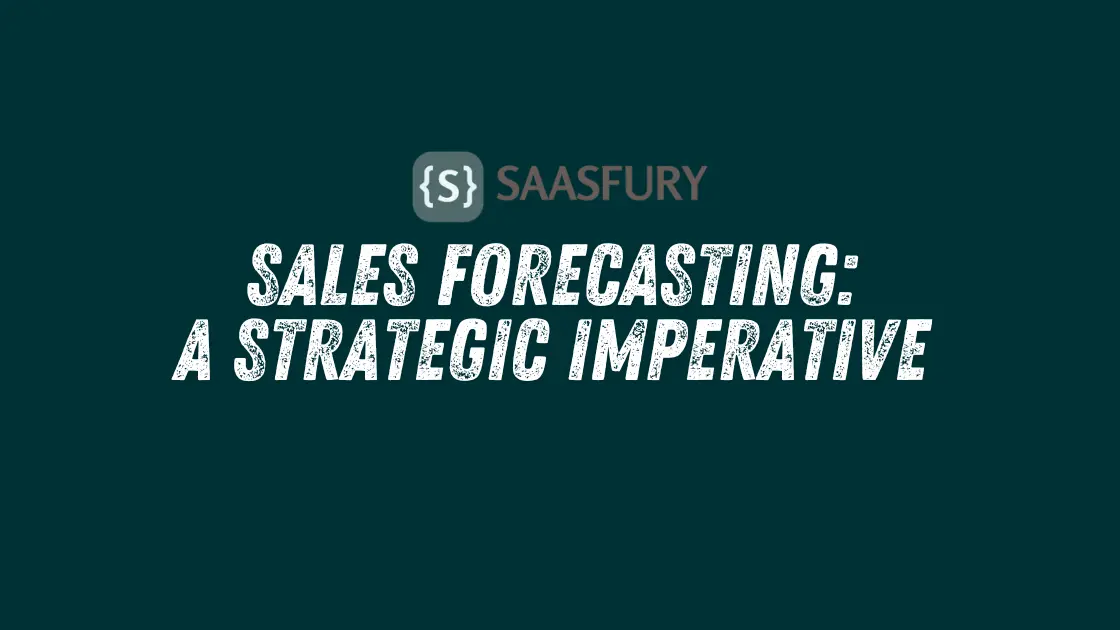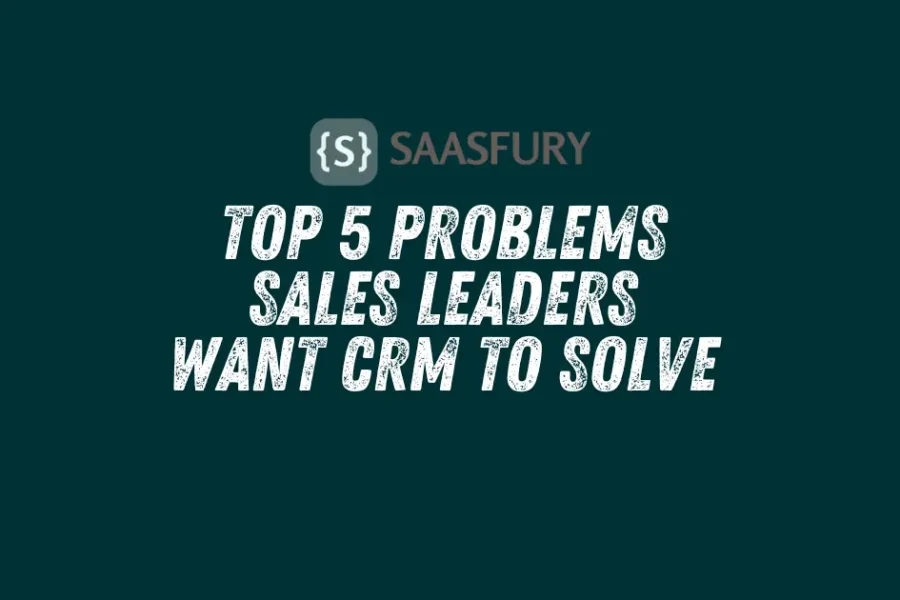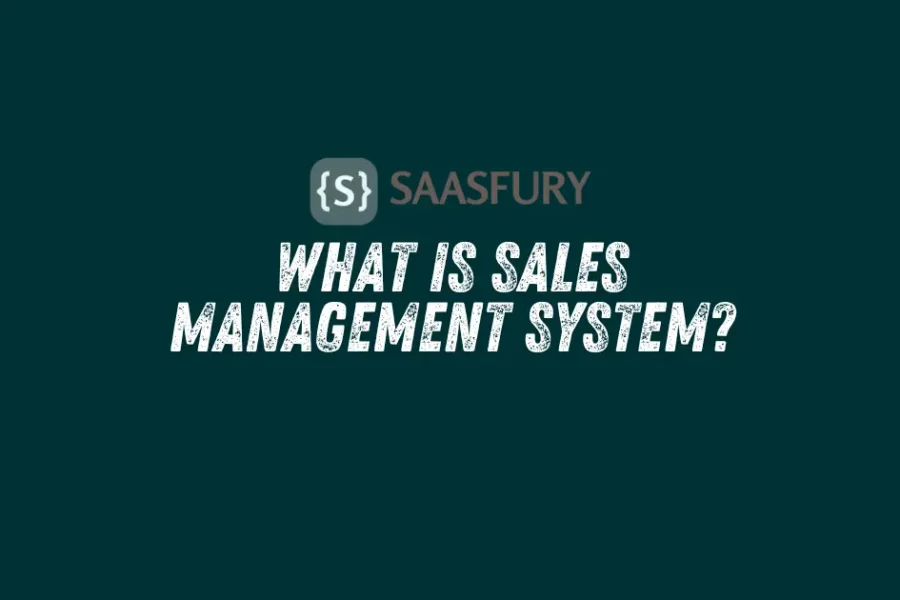Sales forecasting is crucial for strategic business planning. It helps businesses predict future sales and make informed decisions.
Sales forecasting allows companies to anticipate market trends and customer demand. Accurate forecasts enable businesses to allocate resources efficiently and set realistic goals. By predicting future sales, companies can better manage inventory, staffing, and budgeting. This strategic tool aids in minimizing risks and maximizing opportunities.
Businesses can stay competitive in the market by making proactive adjustments. Sales forecasting also enhances communication within the organization, aligning various departments towards common objectives. Effective forecasting combines historical data, market analysis, and expert insights. It is an essential practice for driving growth and achieving long-term success.
Table of Contents

Credit: www.linkedin.com
Importance of Sales Forecasting
Sales forecasting is a vital tool for any business. It helps predict future sales, allowing companies to plan and strategize effectively. Understanding the importance of sales forecasting can drive growth, manage resources, and ensure long-term success.
Driving Business Strategy
Sales forecasting is key to shaping business strategy. It provides insights into future revenue, helping businesses set realistic goals. These insights allow companies to allocate resources efficiently. With accurate forecasts, businesses can identify growth opportunities and mitigate risks. This strategic approach ensures a competitive edge in the market.
Enhancing Decision Making
Accurate sales forecasts enhance decision-making processes. They provide data-driven insights crucial for informed decisions. Here are some benefits:
- Budget Planning: Forecasts help in creating precise budgets.
- Inventory Management: Prevents stockouts and overstock situations.
- Marketing Strategies: Tailors campaigns to anticipated demand.
- Resource Allocation: Ensures optimal use of human and financial resources.
Decision-makers rely on forecasts to steer the company in the right direction. This leads to better financial health and operational efficiency.
| Aspect | Impact of Sales Forecasting |
|---|---|
| Revenue | Predicts future income, aiding financial planning |
| Market Trends | Identifies emerging trends, staying ahead of competitors |
| Operational Efficiency | Improves resource management and reduces waste |
Types of Sales Forecasting
Understanding different types of sales forecasting is essential. It helps businesses plan better. Sales forecasting can be divided into two main categories: qualitative methods and quantitative methods.
Qualitative Methods
Qualitative methods rely on expert opinions and market research. These methods are useful when there is little historical data. They include:
- Delphi Method: Experts provide forecasts anonymously. A facilitator aggregates the results.
- Market Research: Surveys and focus groups gather data from potential customers.
- Sales Team Estimates: Salespeople provide insights based on their experience.
Quantitative Methods
Quantitative methods use numerical data and statistical analysis. These methods are ideal for businesses with historical sales data. They include:
- Time Series Analysis: This method examines past sales data to identify trends and patterns.
- Regression Analysis: It predicts sales based on the relationship between variables. For example, advertising spend and sales revenue.
- Moving Averages: This method smooths out short-term fluctuations to reveal long-term trends.
| Method | Type | Best For |
|---|---|---|
| Delphi Method | Qualitative | New Products |
| Time Series Analysis | Quantitative | Historical Data |
| Market Research | Qualitative | Customer Insights |
| Regression Analysis | Quantitative | Variable Relationships |
Key Components
Sales forecasting is crucial for any business. Understanding its key components helps predict future sales. Two important elements are historical data and market trends.
Historical Data
Historical data provides a foundation for accurate sales forecasts. It includes past sales figures and customer purchase history. This data helps identify patterns and trends.
Here are some benefits of using historical data:
- Identify seasonal trends – Helps understand peak sales periods.
- Track performance – Compares current performance to past data.
- Predict future sales – Uses past trends to forecast future sales.
Market Trends
Market trends show the overall direction of the market. They include changes in customer preferences, economic conditions, and industry shifts. Analyzing these trends helps businesses stay ahead.
Consider these key market trend factors:
| Factor | Impact on Sales |
|---|---|
| Economic Conditions | Affects customer spending power. |
| Industry Changes | Shifts in technology and regulations. |
| Customer Preferences | Alters demand for products. |
Sales Forecasting Techniques
Sales forecasting is crucial for business strategy. It helps predict future revenue and plan resources. Below are two key techniques: Time Series Analysis and Regression Analysis.
Time Series Analysis
Time series analysis examines data points collected over time. This technique effectively identifies trends, seasonal patterns, and cyclic behaviors.
- Trend Analysis: Identifies long-term upward or downward movement.
- Seasonal Pattern Analysis: Detects recurring patterns at regular intervals.
- Cyclic Behavior Analysis: Captures fluctuations over long periods.
Time series analysis can improve forecast accuracy. It helps businesses prepare for future demand fluctuations.
Regression Analysis
Regression analysis explores relationships between variables. It predicts sales based on influencing factors like price, marketing, and economic conditions.
| Type | Description |
|---|---|
| Simple Linear Regression | Analyzes relationship between sales and one variable. |
| Multiple Regression | Explores relationship between sales and multiple variables. |
Regression analysis can uncover hidden relationships. It helps businesses understand how different factors impact sales.
Tools and Software
Sales forecasting is crucial for any business. The right tools and software make it easier. They help predict future sales and plan better. Below are key tools for effective sales forecasting.
CRM Systems
CRM systems are essential for managing customer relationships. They store all customer data in one place. This data helps in predicting sales trends.
Popular CRM systems include:
- Salesforce
- HubSpot
- Zoho CRM
Salesforce offers advanced analytics. HubSpot is user-friendly and free for small businesses. Zoho CRM is budget-friendly with many features.
Predictive Analytics Tools
Predictive analytics tools use data to forecast future sales. They analyze past sales data to predict future trends.
Key predictive analytics tools include:
- IBM Watson
- SAS Analytics
- Google Analytics
IBM Watson provides AI-driven insights. SAS Analytics offers robust statistical analysis. Google Analytics is great for web-based sales data.
Here is a comparison table for better understanding:
| Tool | Main Feature | Best For |
|---|---|---|
| IBM Watson | AI-driven insights | Large Enterprises |
| SAS Analytics | Statistical Analysis | Data Scientists |
| Google Analytics | Web-based data | Small Businesses |
Challenges and Solutions
Sales forecasting is essential for strategic planning. It helps businesses predict future sales and allocate resources effectively. But there are many challenges that can hinder accurate forecasts. Let’s explore some common issues and their solutions.
Data Quality Issues
Poor data quality can lead to inaccurate sales forecasts. Missing data, duplicate entries, and inconsistent formats are common problems. These issues can skew results and misinform decision-making.
To solve this:
- Implement data validation rules.
- Regularly clean and update your database.
- Use automated tools to identify and correct errors.
Ensuring high-quality data will improve your forecasting accuracy and help you make better decisions.
Market Volatility
Market conditions can change rapidly. Economic shifts, new competitors, and technological advancements can affect sales. This volatility makes it hard to predict future trends.
To address market volatility:
- Use scenario planning to anticipate different outcomes.
- Monitor market trends and adjust forecasts regularly.
- Incorporate flexible forecasting models.
These strategies help you stay agile and respond quickly to market changes.
A table can also illustrate some solutions:
| Challenge | Solution |
|---|---|
| Data Quality Issues | Data validation, regular updates, and automated tools |
| Market Volatility | Scenario planning, trend monitoring, and flexible models |
By addressing these challenges, you can improve the accuracy of your sales forecasts. This will help you make better strategic decisions and drive business success.
Best Practices
Sales forecasting is a strategic tool. It helps businesses predict future sales. To get the most accurate results, follow best practices. Here are some essential tips.
Regular Updates
Keep your forecasts current. Regular updates are crucial. Markets change fast. Update your data weekly or monthly. This ensures accuracy.
| Update Frequency | Benefits |
|---|---|
| Weekly | Quick response to changes |
| Monthly | Better long-term planning |
Cross-department Collaboration
Sales forecasting is not just for the sales team. Cross-department collaboration is key. Involve marketing, finance, and operations. This creates a complete picture.
- Marketing provides demand insights.
- Finance offers budget constraints.
- Operations share supply chain data.
Work together to ensure accuracy. Collaboration leads to better decisions.
Case Studies
Sales forecasting is vital for many industries. This section showcases real-world examples. Learn how different sectors use sales forecasting to achieve success.
Tech Industry
In the tech industry, sales forecasting is crucial. Companies often face rapid market changes. Accurate forecasts help them adapt quickly and efficiently.
| Company | Strategy | Outcome |
|---|---|---|
| Amazon | Predictive Analytics | Enhanced Customer Recommendations and 25% Sales Growth |
| Walmart | Historical Data Analysis | 15% Reduction in Stockouts |
| Salesforce | Opportunity Stage Forecasting | 20% Increase in Conversion Rates |
Retail Sector
The retail sector benefits greatly from sales forecasting. Retailers often deal with seasonal trends. Accurate forecasts help them stock the right products at the right time.
| Company | Strategy | Outcome |
|---|---|---|
| Target | Historical Data Analysis | Comparable sales grew 17.2% during the holiday season |
| Kroger | Customer Behavior Analytics | Reduced stockouts by 15% |
| Macy’s | AI-Powered Forecasting | Improved Inventory Management and 30% Reduction in Overstocks |
| Costco | Seasonal Trend Analysis | Enhanced Sales During Holidays with 25% Growth |
Sales forecasting helps retailers stay competitive. It ensures they meet customer demands effectively.

Credit: www.youtube.com
Frequently Asked Questions
What Is Sales Forecasting?
Sales forecasting predicts future sales based on past data, trends, and market analysis. It helps businesses plan and allocate resources effectively.
Why Is Sales Forecasting Important?
Sales forecasting is crucial for making informed business decisions. It helps in budgeting, setting sales targets, and managing inventory efficiently.
How To Improve Sales Forecasting Accuracy?
To improve accuracy, use historical data, market trends, and advanced analytics. Regularly update forecasts and involve multiple departments for better insights.
What Are Common Sales Forecasting Methods?
Common methods include historical data analysis, market research, and predictive analytics. Each method offers unique insights for different business needs.
Conclusion
Sales forecasting is crucial for strategic planning and business growth. Accurate predictions enhance decision-making and resource allocation. Implementing robust sales forecasting methods can lead to significant competitive advantages. Stay proactive, invest in advanced tools, and refine your forecasting techniques. Embrace this strategic imperative to drive your business forward and achieve long-term success.







Leave a Comment